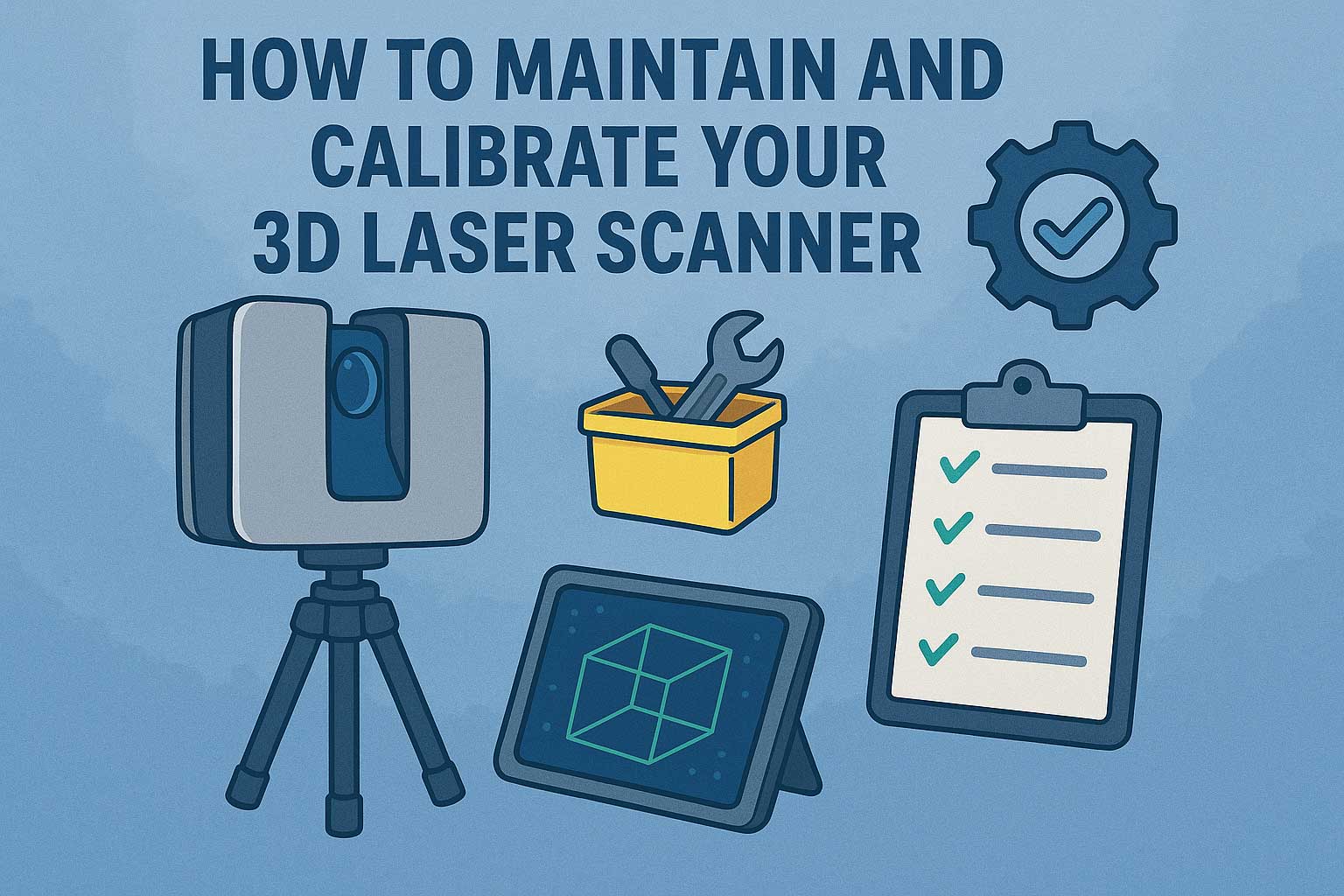Keep your 3D laser scanner performing at its best. Learn essential maintenance routines and calibration of your 3d laser scanner tips to ensure long-term accuracy and reliability.

How to Maintain and Calibrate Your 3D Laser Scanner for Accurate Results
Owning a 3D laser scanner is a significant investment, and like any precision tool, it requires regular maintenance and calibration to deliver consistent and accurate results. Neglecting these tasks can lead to poor data quality, increased errors, and expensive downtime.
1. Why Maintenance and Calibration Matter
Environmental exposure, frequent transport, and extended usage can affect your scanner’s internal components and optics. Even small alignment issues or dust buildup can lead to inaccurate measurements.
Routine maintenance not only preserves accuracy but also extends the lifespan of your scanner.
2. Daily Maintenance Checklist
- Inspect lens and mirrors: Use a microfiber cloth to gently clean dust or smudges.
- Check battery condition: Ensure full charge and no signs of swelling or overheating.
- Secure tripod mounts: Verify that all mounting hardware is stable and vibration-free.
- Clean housing: Wipe down external surfaces to prevent grime buildup.
3. Weekly or Per-Project Maintenance
- Update scanner firmware and scanning software
- Check for firmware compatibility with accessories
- Perform scan tests in a controlled space for baseline validation
- Review point cloud outputs for inconsistencies or anomalies
4. How to Calibrate a 3D Laser Scanner
Most modern 3D laser scanners include an automatic or semi-automatic calibration feature via the device interface or desktop software. Calibration routines typically involve:
- Scanning a certified calibration target or sphere
- Running a tilt or dual-axis check
- Analyzing deviation reports for distance and angle accuracy
If results exceed acceptable error thresholds, the scanner may need professional recalibration from the manufacturer or certified lab.
5. Storage and Transportation Tips
- Always use padded, weatherproof hard cases
- Avoid storing the scanner in extreme heat or cold
- Remove batteries during long-term storage to prevent leaks
- Label fragile components clearly for transport teams
6. When to Send Your Scanner for Professional Service
Consider a full diagnostic and calibration service if you notice:
- Frequent misalignment or registration issues
- Increased scanning noise or missing data patches
- Cracks, dents, or moisture inside the scanner body
Most manufacturers recommend an annual service interval for high-usage scanners.
Conclusion
Proper 3D laser scanner maintenance and calibration can dramatically improve your scanning results and prevent costly rework. By following these simple routines, you’ll keep your equipment in peak condition and extend its useful life for years to come.
For more on long-term equipment care, see our complete scanning equipment maintenance guide or shop certified protective cases and accessories for your device.

Leave a Reply